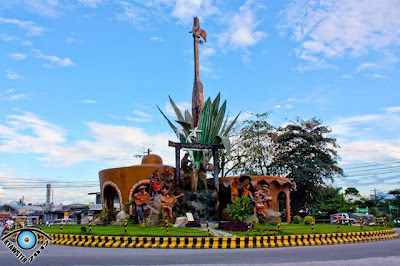National Museum of the Philippines in Butuan City
Oh yeah, there is one in Butuan City, and when I was there was the only time I've heard about it too. I was actually excited to travel to Butuan because I got fascinated by hearing people say good things about the place, however, my excitement seemed to fade judging by the 10 hours of ride that took place in reaching the location. Overwhelmed at the ride, I was too tired to even appreciate the location on our way there.
We haven't had the chance to roam around the city in the 3 training days that we were there but I was able to go with our driver to fetch my boss in Buenavista, Agusan del Norte on the first morning so I had to say a glimpse on the streets of Butuan was okay. Streets are clean, not a lot of traffic, and there are industrial places seemingly evolving in the place, making it a little commercialized.
But I didn't know there was a museum then, until our last day when we had the chance to really go about Butuan City. By boss hails from here so she toured us around and we reached...
It was not the big big museum you are expecting. I have been through a number of museums but this one seems to offer the most historical I've been to.
No cameras are allowed to be used when inside the museum proper so we only had to use it at the lobby bearing all these.
You see, Butuan was once a center of trade in Mindanao and of the Philippines thereby home to the balangays also called Butuan boats, and was were the first communities were said to have come from. Remember, in history, barangay roots from balangay, a boat carrying people and goods.
Thus this picture of the waters and boats welcoming you in the National Museum in Butuan.
According to the curator in the museum, she spoke about the first mass being held in Masaua, Butuan, where according to them, was the first mass held in the Philippines by Ferdinand Magellan and not in Limasawa, Leyte.
Here is a picture of a painting of the last supper as most of the population and religion in Butuan are Catholics because of the Hispanized city, and the people there.
We have gone inside the museum proper where everything was properly explained to us but it would not be good without pictures so I'm skipping the story to another part of the museum in Libertad where they hold the excavated balangays holding lots of historical stories.
This is the balangay, a small one as compared to what the historians and the museum people have dug in Libertad, Butuan City.
Found in Libertad, a marshy area where trade and commerce seemed to root way back in the 10th century, said to be the area where a big flood has washed down a number of boats in this location believed to be a port. These seemingly huge logs are actually excavated many years back and carbon dated to: Balanghai 1 is dated back to 320 AD, boat 2 at 1250 AD and boat 5 at
around 900AD.
There are 9 balangays, but only 1, 2 and 5 are displayed in the Balanghai Shrine where the rest are said to be dugged up yet.
Coffins found along the oldest balangay found. They also carry with them these logs with skulls. A balangay carried 9 coffins with 11 skulls. According to stories, there could be that a coffin carried two bodies because one was discovered to be a royalty while the other was a slave because of skull/head metal markings also found with them.
At the back of the shrine lies the location where all these boats were dug.
You see, we still have many stories of the Philippines that we have not heard of. It is interesting to note that the country where we live seems to be rich in history, culture and tradition. I was aghast at the stories I have heard, very interesting and goosebumps triggering stories where logic and reason lies. I believe that if we have the courage to explore the country more, only then will we understand the beauty that is holds.
More fun in the Philippines, naturally!












Comments
and agree ako kay ibyang...that last supper pic is nice. :)
;-) poor memory, I can't remember the place..
Love 8..<3